




 |
   |
 |
 |
The Art of Rolling (2005, 39.36) ***½/T½ |
|
| Word From the Bird Product of DK I Remember the Days I Want You The Remains of Sir Maison Baby, I've Got Time The Bluverture Revelation of Love |
Mob Rule What the Young People Want Couer de Lion New Slough |
|
Current availability:
Mellotron used:
The Blue Van are only the third Danish band to be featured on this site and one of the others (Etcetera) only uses Mellotron samples, assuming, that is, that these guys are using the Real Deal... For such a young band, they're quite astonishing, clearly refusing to acknowledge any influences later than the '60s, many years before any of them were born. It seems they grew up in quite an isolated part of the country and had few, if any contemporaries to pull them into line, thankfully, with the end result being a joyfully authentic garage band, or what the Americans would call 'British Invasion', I suppose. The Art of Rolling is their debut, following an EP or two; average track length is under three minutes, although New Slough bucks the system, being a fantastic jammed-out eight-minute effort, making full use of Steffen Westmark's vocal tics and Per M. Jørgensen's Keith Moonalike drumming, forever teetering on the edge of collapse, but never quite attaining it.
I don't seem to be the only online reviewer who thinks that Søren V. Christensen's keyboards define the band's sound, with lashings of Vox, Hammond and Wurlitzer all over the shop, plus just a dash of Mellotron, of course. Saying that, short instrumental The Bluverture starts with Mellotron flutes and ends up smothered in the thing, strings and doubtless unintentionally inauthentic cellos blasting away, with more flutes on the more typical What The Young People Want, although that's your lot. So; if raw, '60s-inspired pre-psych rock is your thang, you can't go too far wrong with The Art of Rolling, although originality isn't really part of the equation. One great Mellotron track, too, so try to hear it, if not the entire album.
 |
Twilight (1999, 38.11) ***/T |
|
| Onlyness Bellbottom Bike Accident Remember Heaven Love and Protection False Alarm Arise Pocketbook of Love Out of This World |
Only When I Do Twilight |
|
 |
Have Another Pillow (2003, 54.45) ***/T½ |
|
| Miss Understood Dragon Hill Idol Hands Le Mat (The Fool) Honey Bee Tears Off With My Head White Flag Lullaby |
Flaming Tendrils Elevate Her Brother Love Chosen Land Please Return |
|
 |
Organika (2007, 48.04) ***/T |
|
| The Little Ones Fickle Wanna Be There Longing I Adore You Buy O Life Love Full on Karmic Disguise |
By the Roadside Given Up Grubby Wire Curiosity |
|
 |
Tempest in a Teacup (2019, 42.40) ***½/T |
|
| Dream My Life Burn Volume Wisherman Been Awake Land of Sound Weeping Willow Dare Me |
Keep on Elephants |
|
Current availability:
Mellotrons used:
Before playing these albums, I made two assumptions about Blueberry (the duo of vocalist/keyswoman Gwen Snyder (Siegal) and guitarist Kenny Siegal), both entirely wrong, proving the old saw about the meaning of 'assume'. Instead of being wishy-washy indie stuff, they're surprisingly full-on soul/funk releases and, rather than the expected sample use, both feature real Mellotron.
Twilight is the more upfront of these, possibly at its best on non-slushy piano ballad Only When I Do. Snyder plays skronky string and flute parts on Love And Protection and flutes on Pocketbook Of Love. Have Another Pillow backs off slightly, featuring several tracks that move away from the dancefloor template, not least Honey Bee, the balladic White Flag Lullaby, the vaguely psychedelic Flaming Tendrils and Brother Love. Snyder on Mellotron again, with strings and cellos on Off With My Head and Chosen Land (particularly obviously at the end of the latter) and a flute part on Flaming Tendrils. It might even be elsewhere, buried in the mix, not helped by the album's real strings.
2007's Organika (reissued, oddly, a year later, as Blueberry) carries on the good work, possibly at its best on Wanna Be There, the curiously-named Buy O Life and By The Roadside. It seemed as if the album would be Mellotron-free, until Snyder's chordal strings part cropped up on closer Curiosity. A twelve-year gap followed, before 2019's Tempest in a Teacup, which takes a complete stylistic left turn, being more in the indie pop/rock line, at its best on Wisherman, Dare Me, Keep On and beautiful closer Elephants. Mellotronically speaking, we get Snyder's background strings on Keep On and upfront ones on full-on Mellotron-fest Elephants (thanks for the info, Gwen).
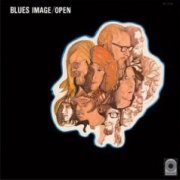 |
Open (1970, 36.42) ***/½ |
|
| Love is the Answer Running the Water Clean Love La Bamba Consuelate Ride Captain Ride Pay My Dues Fugue U |
Parchman Farm Wrath of Daisey Take Me |
|
Current availability:
Chamberlin used:
Blues Image were a Florida-based late '60s band, who seemed to cover quite a bit of musical ground, certainly going by their second album (of three), 1970's Open. An odd record, it shifts style pretty much every track, from the hard(-ish) rock of opener Love Is The Answer, through Clean Love's blues jam, their Latin-lite version of Ritchie Valens' La Bamba... The end result is a rather unfocussed record, albeit one with its moments, not least the excellent jam in lengthy closer Take Me.
Keyboard player Frank "Skip" Conte (subsequently of Three Dog Night) played Chamberlin (possibly the impossibly rare four-manual M4 he used with that band), although it's barely audible, providing the woodwind (oboe?) on major pop hit Ride Captain Ride. Overall, a rather average effort, with the benefit of hindsight, although it's far from offensive. 'Also-rans', I think, despite their brief prominence.
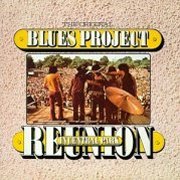 |
Reunion in Central Park (1973, 58.47) ***½/TTLouisiana BluesSteves Song I Can't Keep From Cryin' Sometimes You Can't Catch Me Fly Away Caress Me Baby Catch the Wind Wake Me, Shake Me Two Trains Running |
Current availability:
Mellotron used:
The Blues Project could only have been named in the mid-'60s - any later and the name would've been considered too clichéd, or plain too old-fashioned. Consisting of a mixture of session guys and other seasoned musos including guitarists Danny Kalb and Steve Katz, they were joined soon after their formation by session wunderkind, multi-instrumentalist Al Kooper on keys. Kooper left after three albums, only one of which was a proper studio effort, going on to Blood, Sweat & Tears, more session work and a solo career, before rejoining the band (as 'The Original Blues Project') for a one-off live album, Reunion in Central Park. Before you envisage crowds of hundreds of thousands, the gatefold shows a seated crowd of a few thousand, which was probably the setup for most gigs in the park (see: King Crimson the following year).
The album's a good document of what must've been a burning live band in their day; they ain't so bad here, as it happens. While there is some straight blues (chiefly You Can't Catch Me) to be found here, the band were always far more eclectic than that and manage pretty much a different style on every track. Side three's cover of Donovan's Catch The Wind shows the band's folkier side, although it's almost jazz in places and while side four's lengthy jam Two Trains Running is a blues, it goes way beyond most older blues acts' comfort zones.
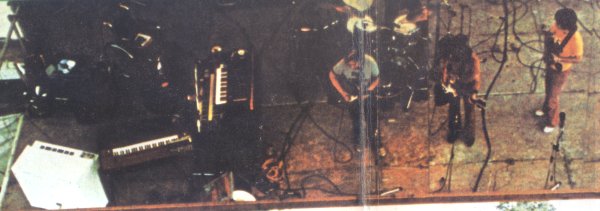 |
Kooper brought a good-sized keyboard rig along; a B3 topped with a MiniMoog, a Clavinet that he strangely left standing on its own, demoting his M400 to his far right (why not put it on top of the Mellotron?). This pic is from the inside gatefold and has been reversed to get it 'right', as the original is a reflection from an above-stage mirror. The Mellotron actually gets a mention in the tracklisting, with a 'Mellotron - Al' credit after Steves Song [sic.], where he lays down some decent flutes, shifting between them and strings. However, Catch The Wind is the album's standout Mellotron track, absolutely smothered in strings, played in a pleasingly orchestral manner, with the odd bit of flute thrown in for good measure.
This band's influence is clearly considerable; Lynyrd Skynyrd (funnily enough, a recent Kooper production) seemingly copped their entire sound from opener Louisiana Blues and I spotted a bit 'borrowed' by the Blue Öyster Cult somewhere, too. So; if you want to hear where Al Kooper came from, this isn't a bad place to start, though it is essentially (surprise, surprise) a blues album. Anyway, two decent Mellotron tracks, right up in the mix; not bad for a lives blues album, eh? Incidentally, I suspect the double album is the whole set, as it's pretty short and could easily have another twenty minutes spread across its four sides.
 |
Parklife (1994, 52.55) ***½/½ |
|
| Girls & Boys Tracy Jacks End of a Century Parklife Bank Holiday Badhead The Debt Collector Far Out |
To the End London Loves Trouble in the Message Centre Clover Over Dover Magic America Jubilee This is a Low Lot 105 |
|
Current availability:
Mellotron used:
Blur's third album, Parklife, was the one that broke it wide open for them, although it's slightly strange in retrospect to think that for a few short months they were neck-and-neck with Oasis, before the monobrowed ones leapt ahead, at least commercially. Parklife does sound a little of its time now and hasn't dated as well as, say, Pulp, but it's still a musical microcosm of early-'90s Britain, full of characters like The Debt Collector, or the layabout narrated by Phil Daniels in the title track. The album actually covers quite a lot of ground, musically, stepping far outside Oasis' narrow boundaries, taking in music hall and various other indigenous styles (you mean we have some?), although Damon Albarn's faux-cockernee vocals just irritate, especially when you know he's a nice middle-class boy from Essex.
An online interview alerted me to the fact that the band used a real, gen-u-wine Mellotron on one track, although it was barely worth it for the few seconds of strings we get on Badhead, presumably played by Graham Coxon. So; a good album, defining 'Britpop' better than most of their contemporaries, although absolutely not worth it for the Mellotron.
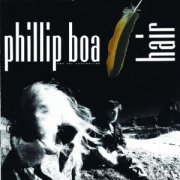 |
Hair (1988, 40.16) **½/T |
|
| Hurray Container Love You Sent All My Letters Primitive Man Tragic Mastery of Stock Hausen Happy Spider Morlocks in England They Say Hurray |
Albert is a Headbanger Fine Art in Silver Boleria I Wanna Be Your Hoover I Go Down to the Sea |
|
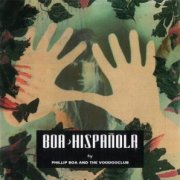 |
Hispañola (1990, 40.09/77.40) **½/T (T½) |
||
| This is Michael I Don't Need Your Summer The Day I Lost My Sleep Jules Verne Love-Hate-Crap! König Hedon Rocshee They Paint the Silence |
Don't Kill Me Slaughter Ernest Statue Eva in the Froggarden De-Generators [2006 version adds: 29th Love Affair I'm So Phisticated Boa Diddley |
This is Michael (original) The Day I Lost My Sleep (original) Blood on the Wind (demo) Fairyteller Solid Gold Easy Action Sex Mission (demo) Don't Tell Me Why (demo) This is Michael (Westbam Remix)] |
|
Current availability:
Mellotrons used:
Ernst Ulrich "Phillip Boa" Figgen is a German new wave type who has released albums regularly since the mid-'80s, 1988's Hair being his fourth. It consists of a range of new wave-inspired pop/rock styles, better examples including Morlocks In England, the faux-metal of Albert Is A Headbanger and Boleria, Boa's take on Ravel's Boléro, unfortunately all rather spoiled by Boa's non-voice. Thomas Kässens plays Mellotron, the album actually opening with a brief Mellotron flute solo, Hurray, with more of the same on Boleria, although all oboe parts are real.
Boa followed up in 1990 with Hispañola, a similar album to its predecessor, discepancies including the folky mandolin on opener This Is Michael, the accordion on I Don't Need Your Summer and the electro feel on several tracks. The original release has been almost doubled in length by a 2006 reissue, although only fans of the man have any need to get excited about this development. Kässens on Mellotron again, with instantly-recognisable background strings on Rocshee and De-Generators on the original release, plus more upfront strings on the Blood On The Wind demo on the expanded edition.
See: Samples etc.
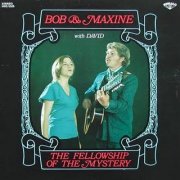 |
The Fellowship of the Mystery (1975, 31.17) **½/TT½ |
|
| Spread Your Wings As Ye Know Gotta' Give a Little Centurion's Song Love is Reach for the Light We Come and Go Lucas McGraw |
A Special Kind of Beautiful Pave the Way |
|
Current availability:
Mellotron used:
Bob and Maxine Johnson's The Fellowship of the Mystery, awkwardly credited to Bob & Maxine (with David [Rowe]) sits, to my surprise, at the better end of '70s Jesus Rock, at its best on its slower material, not least As Ye Know and Centurion's Song, although country hoedown Lucas McGraw is good fun, in a clean-living kind of way. That shouldn't be taken as a recommendation, however; this is, after all, still its era's CCM. Lyrics aside (their awfulness goes without saying), the album has one fatal flaw: Bob sings consistently flat, in a 'sets your teeth on edge' kind of way, although Maxine's got a perfectly tuneful (if slightly anodyne) voice. Still, Bob loves Jesus, so I'm sure that makes it OK.
Mitch Humphries plays (studio?) Mellotron, with strings and cellos on As Ye Know, Centurion's Song, We Come And Go and A Special Kind Of Beautiful, the last-named sans cello. As Christian music goes, I've heard so much worse, which isn't to say that I advise you to track this down.
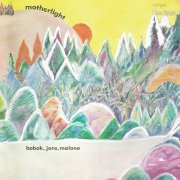 |
Motherlight (1969, 31.19) ***½/TMotherlightOn a Meadow-Lea Mona Lose Wanna Make a Star, Sam House of Many Windows Chant Burning the Weed The Lens |
Current availability:
Mellotron used:
Here's one I heard about forever ago, but have only just returned to. Mike Bobak, Andy Johns and Wil Malone were 'backroom boys' at Morgan Sound Recording Studios in Willesden, London, all fine musicians, who recorded 1969's Motherlight in studio downtime. It's a late-period psych effort, throwing pretty much everything into the pot, possibly at its best on the opening title track, the ripping, organ-and-guitar-heavy Mona Lose and the excellent House Of Many Windows although lengthy closer The Lens is rather pointless filler, presumably due to a dearth of material. The rather unsubtle Burning The Weed raises, a smile, too. Obvious influences include Pink Floyd and (most of all) Procol Harum, but it's probably fair to say that the three gentlemen concerned (so why was Johns' name misspelled, anyway?) were better technicians than writers.
Wil Malone played (I presume) played Morgan Studios' MkII, with vibes on the title track and an unidentified chordal part (tenor sax?) on the experimental Chant. Johns (1950-2013, younger brother of Glyn and uncle to Ethan) and Peter "Wil(son) Malone" Wilson went on to be top-name producers and, in Malone's case, arrangers (Black Sabbath, many others), while Bobak had a shorter career as an engineer. Despite the hype, Motherlight is no classic, but it's a listenable period piece with considerable charm, if little Mellotron.
See: Orange Bicycle
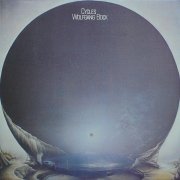 |
Cycles (1980, 42.22) ***½/TTCyclesRobsai Part 1 Robsai Part 2 Changes Stop the World |
Current availability:
Mellotron used:
German synthesist Wolfgang Bock's debut album, 1980's Cycles, was produced by Klaus Schulze, so it should come as no great surprise to hear that the end result resembles his work more than what, even then, was probably considered electronic music's standard. Opening with the side-long title track, the piece is defined by washes of string synth, drums kicking in around the seven-minute mark, unusual for the genre, albeit less so for Schulze's work, while side two's shorter tracks all work well, at their best on ten-minute closer Stop The World.
Bock plays Mellotron male choirs on the opening title track and Changes, leaving a full-on, unaccompanied section in Stop The World as the album's Mellotronic highlight. Are those bells on the last-named sourced from the Mellotron? It seems doubtful, as they last for a minute or more, slowing down towards the album's conclusion, but it's difficult to know when production tricks might have been employed. Why has this never been reissued? Who knows? Far more worthy than many I could name.
See: Klaus Schulze
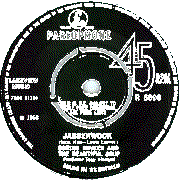 |
7" ( 1968) ***½/T½ Jabberwock Which Dreamed it |
Current availability:
Mellotron used:
The mysterious Boeing Duveen was finally outed a while back as 'rock doctor' Sam Hutt, better known as Brit-country legend Hank Wangford. He, along with The Beautiful Soup, produced just the one single, the fab psych effort Jabberwock (complete with obligatory period sound effects), basically Lewis Carroll's poem set to music, backed with the raga-rock of Which Dreamed It. Both sides of the single are available on various psych-era compilations, official and otherwise, unlike many gems from the time.
Someone plays MkII Mellotron on the a-side, with a restrained flute part and almost-distorted strings, sounding like the machine was routed through an amp. I wouldn't actually recommend spending loads of money to get hold of this, but if you're thinking of buying Bam Caruso's Waxworks Vol. 1 anyway, this will come as a nice bonus.
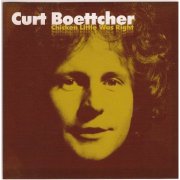 |
Chicken Little Was Right (2004, recorded 1973, 30.07) ***½/T |
|
| I Call You My Rainbow Louise Out of the Dark of the Night Astral Cowboy Rest in Peace Sunrise Mango Sunsets Falling We're Dying (Angel City) |
You Make Me Feel So High I've Been Wrong She's Got the Power |
|
Current availability:
Chamberlin used:
Curt Boettcher is best-known for his work with The Association and The Millennium, although his career spanned twenty years, only curtailed by his untimely death in 1987. His unreleased recordings from 1973 first appeared in 2004, titled Chicken Little Was Right, reissued in truncated form as disc five of Sony's eight-disc Millennium-and-associated set, At Last, the version reviewed here. In some ways, it's an album out of time, having more in common with Boettcher's spiritual home, the late '60s, than anything from 1973, although much of it could easily pass for what it actually is, an early '70s West Coast singer-songwriter record. Highlights? Opener I Call You My Rainbow, the light-as-air (in a good way) Louise, Out Of The Dark Of The Night and 'bonus' track She's Got The Power, not on the 2004 version.
Frank "Skip" Conte (soon to be of Three Dog Night) plays Chamberlin, with flutes and strings all over I Call You My Rainbow, although that would seem to be our lot. Not the heaviest use ever, then, but worth hearing, as is the album as a whole for anyone who ever liked The Millennium.
See: The Millennium | Michael Fennelly
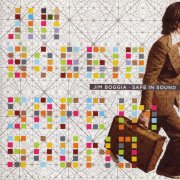 |
Safe in Sound (2005, 57.11) ***½/T½ |
|
| Shine Live the Proof Show My Face Around Underground Where's the Party Once Made Me So Happy Talk About the Weather |
Let Me Believe This Lie Final Word Slowly Super Girl Rainy Day in Manayunk |
|
Current availability:
Mellotron/Chamberlin used:
Jim Boggia's Safe in Sound, while a good album in a kind-of powerpop vein, fails to match 2001's Fidelity is the Enemy for quality, which isn't to knock it. Highlights include the joyous Live The Proof, the raucous Underground, Made Me So Happy and the lengthy, atmospheric Slowly, although losing a handful of lesser tracks would have both brought the record down to a sensible length and tightened it up in one fell swoop.
Three credited tape-replay players, Mike Frank and Boggia on Mellotron, Boggia also playing Chamberlin, along with Julian Coryell. Are they real? As so often, very hard to tell, but, in this instance, I think so. Definite sightings include strings on Where's The Party and Once, plus upfront flutes on Talk About The Weather, but is that a flute part on Show My Face Around? Other 'possibles' here and there, but I'm sticking with these three, I think.
See: Samples etc.
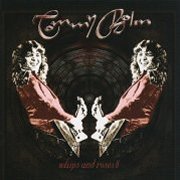 |
Whips & Roses II (2006, recorded 1975, 74.33) **/T |
|
| The Grind Crazed Fandango People People Homeward Strut Sooner or Later Bagitblues Deluxe Spacey Noodles Lotus |
Journey 2 Bolins Boogie Tommy's Got Da Blues Some People Call Me |
|
Current availability:
Mellotron used:
Tommy Bolin (1951-1976) is, along with the similarly ill-fated Paul Kossoff, frequently lauded as one of the great lost guitar talents of his generation. In fairness, it's an opinion based on ten albums released during his short lifetime, including significant guest spots, given that Randy Rhoads (rightly) gets more acclaim in certain circles for the mere two studio releases that anyone's heard. Given that Bolin was the proud possessor of a good studio tan, the vultures descended on the storage rooms of a host of Midwest studios the moment he died, making 2006's Whips & Roses II something like his fifteenth posthumous studio release (with a similar number of live sets), most of them seemingly padded out with aimless jams. Sad to say, this album is no exception, switching between not-especially-good songs (opener The Grind, People People) and the aforementioned aimless jams (Crazed Fandango, the interminable Bagitblues Deluxe), the two 'bonus tracks' stuck on the end presumably being labelled as such due to their lower quality, both sound and music.
An unknown player, quite possibly Jan Hammer, given that he a) played at the sessions and b) had just used one on his own The First Seven Days, adds Mellotron strings to the relatively brief Spacey Noodles in a most pleasing fashion, with less of the same on Journey 2. This is a thoroughly cynical release, akin to the landfills of guff that crept out into the daylight, blinking, after Hendrix's death. Pointless.
See: Deep Purple
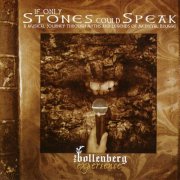 |
If Only Stones Could Speak (2002, 57.26) ***½/TT½If Only Stones Could SpeakHoly Blood Minna Ursus Bruggia Café Vlissinghe No Words Anna From the Well The Story of Three The Goodnight Knight |
Current availability:
Mellotron used:
The Bollenberg in question is Belgian music journalist John "Bo Bo" Bollenberg, active on the European progressive scene for many years now. These days, he tends to write mainly for ProgressiveWorld.net, although he's written for various magazines in the past, not least US mag Progression. Apparently, he also sang in prog band Ouies in his pre-journalism days; suffice to say, although we don't always agree on who's hot and who's not, he knows what he's talking about when it comes to prog. If Only Stones Could Speak is John's first album, although he has guested on other artists' records, not least the New Grove Project's Brill. Subtitled 'A Musical Journey Through Myths and Legends of Medieval Brugge', the album has a decidedly medieval flavour to many of the tracks, although John's slightly characterless vocals sound uncomfortable with the subject matter in places. The concept, such as it is, deals with, unsurprisingly, the history of Brugge and what stories the stones could tell, which beats the hell out of the usual rubbish peddled by many modern bands in the name of the 'concept album'.
John's years in 'the biz' have paid off handsomely, as the album's stuffed with his famous friends, including Pär Lindh, Rick Wakeman (!), Roine Stolt (The Flower Kings), Jordan Rudess (Dream Theater) and members of inexplicably popular current UK dullards Mostly Autumn. Unfortunately, the end result of so many guests is a slightly uncohesive sound, though far from an unpleasant one; medieval beats neo- any day round these parts. Compositionally (most of the music being written by Bollenberg's collaborator Björn Johansson), the more medieval-sounding pieces tend to work better, at least to my ears, the straightforward rock drumming (also from Lindh, surprisingly) and William Kopecky's 5-string bass sounding rather out of place and unnecessary. Given that Lindh's forté is keyboards, maybe a more inventive progressive drummer should've been found for the project.
Both Lindh and Johansson play Mellotron, with male voice choir and flutes on the opening title track, background 8-voice on Holy Blood and upfront flute and string parts on Ursus Bruggia, with more of the same on Anna From The Well, with a string part near the end of The Goodnight Knight to round things off nicely. A real twenty-piece choir is also present, so I'm hoping I haven't confused the two anywhere. So; do you? Well, given that many people are going to turn their noses up at an album made by 'a journalist' (hardly the first), this is actually rather good, although not every track convinces.
See: New Grove Project | Pär Lindh Project
 |
Lure the Fox (2006, 42.00) ***/T |
|
| Fox and Hound Ransom Hawaii Daisy Girls Us Captain Captain Give it Up Devilish Man |
Holiday in Outer Space Too Much Nothing Blue Ridge Mountains |
|
 |
Big Star (2008, 31.16) ***/T |
|
| Green Eyed Boy Arms of Harm Little Maiden Gin Big Star May Day Better Half Something Great |
Queen of Everything Highway 16 Along Tiger Boy |
|
Current availability:
Mellotrons used:
Minnesotan (or South Dakotan?) Haley "Bonar" McCallum's second album 'proper', 2006's Lure the Fox, is a mournful album, albeit one that sometimes tips into a quiet beauty, the antithesis of the era's glossy, TV show-friendly singer-songwriter guff. An obvious influence are local heroes Low; guitarist Alan Sparkhawk even guests here. It might just be at its best on opener Fox And Hound, Captain Captain's upright piano, Devilish Man and six-minute closer Blue Ridge Mountains, just Bonar's haunted voice and guitar. You might expect me to go for the more upbeat Give It Up, but the full band arrangement doesn't work well in this context. Bonar plays Minneapolis' Third Ear Studios' MkVI, with background chordal flutes on Us, recording location and engineer both credited, heading off any potential disputes.
Her next studio release, 2008's Big Star, presumably named in honour of, sits somewhere between 'alt.', 'singer-songwriter' and 'Americana', highlights including the haunted Mayday and closer Tiger Boy. Like so many similar, though, she's guilty of trying too hard in places, tackling upbeat alt.rock-type material (Something Great, Queen Of Everything) that doesn't fully suit her voice. Bonar and Paul Marino play well-arranged, Mellotron flutes and strings on Tiger Boy, to decent effect.
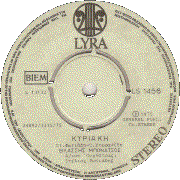 |
7" (1975) **½/TT Oso ki an Psachno Kyriaki |
Current availability:
Mellotron used:
It seems that Greek entertainer Vlassis Bonatsos (Βλάσσης Μπονάτσος, 1949-2004) is better-known for his film and TV work than his music, although he released several singles and albums over a ten-plus-year period. An early release (his first?) is a 1975 single, Oso Ki An Psachno (Οσο κι αν Ψάχνω), an upbeat effort with a folk-inspired melody, while the flip, Kyriaki (Κυριακή), is a pretty typical ballad for its time and place, making these less-than-fully-essential listens today.
An unknown musician plays Mellotron strings on both tracks, albeit considerably more on the 'B' than the 'A', to reasonable effect. These are on YouTube, for those who just can't get enough bouncy European pop or Mellotronic Greek balladry.
 |
Million Seller Country Hits Made Famous By Roger Miller (1969, 22.35) **½/T |
|
| King of the Road Chug-a-Lug Little Green Apples Engine, Engine #9 Sad Eyes Dang Me Kansas City Star You Can't Roller Skate in a Buffalo Herd |
Camptown Races Snowballs in July |
|
Current availability:
Chamberlin used:
Bobby Bond was one of many hopeful country artists who drifted to Nashville in the '60s, making a minor career out of recording albums of covers, not least 1969's clunkily-titled, EP-length Million Seller Country Hits Made Famous By Roger Miller. Now largely forgotten outside the country world, Miller (1936-1992) might be best-known for writing King Of The Road, the opening track here and the only one I recognise. While fairly hokey, this kind of country at least sidesteps the slushy, sentimental sound Nashville became known for over the following decade, more honky-tonk than insipid balladry, although Little Green Apples and Sad Eyes are pretty maudlin. Dang Me, You Can't Roller Skate In A Buffalo Herd and a spirited, instrumental take on Camptown Races are all listenable, but country fans are probably better off listening to the originals.
Someone (Gary S. Paxton?) plays Chamberlin, with 'orchestral replacement' strings on Little Green Apples, practically swamping the song. Unlike many, Bond finally actually achieved minor success as a songwriter, notably with Six White Horses, although he's hardly what you'd call a household name.
Graham Bond (Organization) (UK) see: |
 |
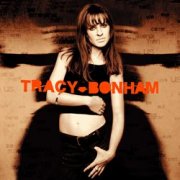 |
Down Here (2000, 42.03) ***/½ |
|
| Freed Behind Every Good Woman You Don't Know Me Fake it Cold Day in Hell Jumping Bean Oasis Hotel Second Wind |
Thumbelina Meathook You Can't Always Not Get What You Don't Want Give Us Something |
|
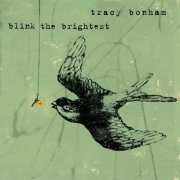 |
Blink the Brightest (2005, 45.44) ***/½ |
|
| Something Beautiful I Was Born Without You And the World Has the Nerve to Keep Turning Eyes Take Your Love Out on Me Whether You Fall Dumbo Sun |
All Thumbs Naked Shine Wilting Flower Did I Sleep Through it All? |
|
Current availability:
Mellotron/Chamberlin used:
Tracy Bonham (no relation to a certain now deceased drummer) plays a kind of rock/pop/singer-songwriter hybrid that manages to be reasonably challenging in places without actually being obscure. Saying that, much of the material on her second album, 2000's Down Here is pretty mainstream pop/rock, though likeable enough, all things considered. One of the album's several producers, Mark Endert, also plays Mellotron strings on opener Freed, although you'd be hard-pushed to spot them under Bonham's violin, though not as hard-pushed as to spot whatever Mitchell Froom plays on Cold Day In Hell, which is completely inaudible.
Bonham worked with The Blue Man Group in the early '00s, presumably one of the reasons for her five-year gap between solo releases. 2005 brought Blink the Brightest, which, while not a bad record, is closer to the mainstream than its predecessor. As with so many (effectively) singer-songwriter efforts, the album's power is in the lyrics, And The World Has The Nerve To Keep Turning being a particularly strong example. If Greg Collins' Chamberlin contribution wasn't credited, you'd have absolutely no idea it was there; the few seconds of Chamby clarinet could be almost anything, up to and including a real one, though at least we get to (briefly) hear an unusual Chamberlin sound.
See: The Blue Man Group